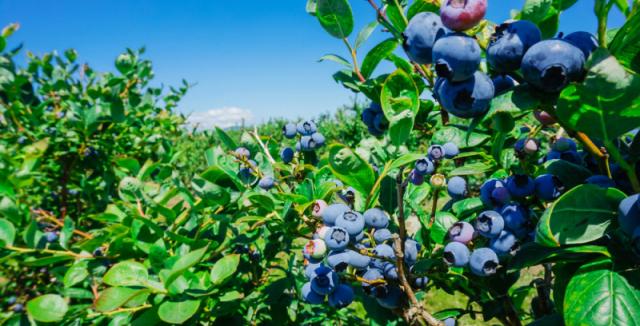
print font size how to grow Canadian blueberries: 7 mistakes you must not make
A plant from the heather family, known as the Canadian blueberry, bears the correct botanical name of cranberry (Vaccinium corymbosum). As its commercial name suggests, it originates in North America, specifically in its eastern part, in the area from Ontario to eastern Texas. In our country, the Canadian blueberry has been known and commonly grown by gardeners for many years, but there are still plenty of people who fail to take care of it. The reason is usually the omission of its basic requirements and the resulting set of errors, which we will introduce you to in the following overview.
Blueberries - sweet fruits that you can easily grow at home on your balcony
First mistake: you don't take the time to choose a variety
Sometimes it's hard. A person comes into the store and at first glance, a mature blueberry covered with blue fruits catches his eye. How perfect it would be for your garden or balcony! However, we recommend resisting and getting to know the available varieties and their characteristics first. Since cranberries are only partially self-pollinating, for the success of a bountiful harvest, it is wise to get at least two bushes to plant close together so that they can pollinate each other. For this reason, choose varieties that are different, but match in the flowering period. You can find their offer, for example, on the websites of blueberry farms or horticulture. They are divided according to the time of fruit harvest into varieties:

Kamchatsky honeysuckle tastes like blueberries, is easy to grow and bears fruit already in May
Mistake two: you don't provide a suitable habitat for blueberries
Complete shade or full heat are not suitable for Canadian blueberries. Choose a location for them somewhere between the two mentioned options, with enough sunlight needed for fruit ripening, ideally in humid semi-shade - higher air humidity is very important.
Mistake three: you use a substrate with a bad pH
The basis from which you need to start is clay-sandy or sandy soil with an acidic reaction (pH 4-5) - this is the most essential. If you do not provide such soil to the plants, they will not grow well and eventually die despite all your efforts. Blueberries are fine with a mixture of sand and peat, but if you are one of the fans of natural gardens, so you don't want to use peat, replace it with peat (created by composting leaves from trees and bushes). Soil with a suitable, i.e. acidic, pH must be replenished regularly. It is good to spread a layer of mulch over it - ideally from conifers (bark, shavings, sawdust, twigs, etc.).
Visit a blueberry farm with us!
Fourth mistake: you don't prepare the planting hole enough
Canadian blueberries are demanding, not only in terms of the substrate, but also the planting itself, although the season is shallow. Dig a hole for them at least half a meter deep and a meter wide. If you have completely unsuitable soil in your garden, it is recommended to dig a little deeper and line the entire pit both at the bottom and on the sides with conifer wood to create a suitable pH. Sometimes there is even talk of planting tubs, and it is recommended to separate these pits from the surrounding soil with foil and fill the bottom with drainage in the form of pebbles or gravel intended for water drainage. It is true that you can plant containerized, well-rooted plants at any time during the season, however, the most suitable period in terms of moisture utilization is autumn or early spring.
Bio garden: How to grow small fruits without chemicals
Mistake five: you water too much or too little
Given that the cranberry originally grows in wet meadows, forests and bogs , its increased need for water can easily be deduced from this. But the mistake is if you let the plants stand in water - they absolutely do not tolerate overwatering. That is why the above-mentioned drainage layer is so important, which drains away excess water, as well as mulching, which ensures that the soil does not dry out, and regular watering, which will contribute to a rich set of fruits and their growth.
Mistake six: you fertilize at the wrong time with the wrong fertilizer
Blueberries need fertilization just like other plants. The easiest way is to purchase a preparation designed specifically for them (special acid fertilizers that do not contain chlorine and with a minimum amount of nitrogen). The time suitable for fertilizing is early spring, then when buds are forming and lastly after flowering. From July, do not fertilize the plants so that they overwinter well.
Mistake seven: you don't cut the blueberry
As with other shrubs, blueberries need to be cut regularly. Make the first cut immediately after planting. Remove weak, somehow deformed or inward-pointing shoots and leave only one to three of the strongest shoots. Trim them slightly so that the bush branches out. A classic maintenance cut is carried out in the spring. Its part again includes the removal of weak, deformed or inward-pointing branches, as well as old, dead branches. Blueberries bear fruit on one-year shoots, so always let two or three of the strongest shoots grow.







